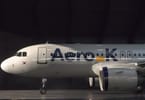WASHINGTON, D.C. – The Advisory Committee for Aviation Consumer
Protection (ACACP), established by the U.S. Congress and overseen by the Department of Transportation, has invited Business Travel Coalition (BTC) to participate in its initial meeting today to represent the interests of large corporate purchasers of commercial airline services. BTC will implore the committee to support the restoration of comparison-shopping for air travelers.
Points BTC will make.
. For nearly half-a-decade all consumers have been forced to purchase airline tickets without the complete information (base fares and ancillary fees) necessary to easily evaluate the full cost of air travel. Airline fees have been expanding in number and rising in cost. They have become time-consuming to research and virtually impossible to compare in combination with base airfares across airlines. In most cases, base airfares are defined differently among airlines, and thus, have become meaningless. Robust price competition when it comes to ancillary fees doesn’t exist.
. Consumers are being denied the complete and accurate price
information needed to make informed decisions. Since 2008 airlines have refused to provide ancillary fee information to travel distribution participants such as travel agencies and websites that allow across-airline price comparisons. Consumers need real-time, comprehensive fee information that enables them to purchase the complete air travel product.
. Consumers trying to figure out their vacation budgets need to be
allowed to easily compare prices across airlines including baggage and seat reservation fees. This means that airlines must be required to release their prices, including those for ancillary services, through local community travel agents, online travel companies and other outlets where airlines choose to sell their tickets.
. With respect to large corporate purchasers of commercial air
transportation services, who largely underwrite the aviation system, the ancillary fee issue can be even more vexing. The mission of modern managed travel is to control costs through travel policy, sourcing strategies, efficient travel management company and travel department operations and the ability of travelers to choose travel options that best balance cost, productivity, convenience and safety for each given trip.
. It takes massive computing power for travel management companies
(TMCs) – that support corporate travel departments – to efficiently present relevant routing options for business travelers, let alone if ancillary services and associated fees were included. Combined fare and ancillary services prices are currently not automated and presented to travelers for
comparison-shopping purposes because airlines have ignored their best customers’ demands to provide TMCs with ancillary fee data in a transparent and purchasable format.
. Corporate travel managers understand this and are frustrated over the many wholly avoidable problems caused by airlines denying them the automated and dynamic ancillary fee data necessary to run managed travel programs effectively and efficiently. A static list of services and fees on an airline website hardly represents transparency and offers little benefit
for travel programs, particularly when you consider that these fees may or may not apply to any individual traveler on an itinerary-by-itinerary basis.
. Consider that the fees may apply to some fares, but not to others according to an individual airline’s fare rules. It may apply for some negotiated rates but not for others. Some travelers may receive ancillary services for free based on the charge card used or frequent flyer tier status; others may not. The list goes on and on and on.
. In order for there to be true transparency, ancillary services and fees need to be combined with airfares via this massive computing power so that fully priced, side-by-side comparative travel options can be presented for a traveler’s consideration. Otherwise, fees remain, for all intents and purposes, completely obfuscated from the millions of disparate options that were once so efficiently comparison-shopped.
. True transparency requires that fees be purchasable during the same transaction with airfares. In this symbiotic relationship, there can be no real transparency without purchasability and no effective purchasability without automated and real-time transparent fee data.
. The consequences of this problem for corporate travel managers are significant and growing with each day that airlines refuse to provide their best customers with what they require for success within modern managed travel programs.
. Consider these negative impacts:
– budgeting and forecasting are rendered unreliable;
– shopping, purchasing and data collection processes for TMCs are more costly;
– clarity of total air travel spend is clouded;
– airline negotiations are made more arduous from the lack of comprehensive data;
– ineffective comparison-shopping reduces marketplace pricing discipline on fares and fees;
– financial, travel policy and audit controls are rendered less effective;
– traveler confusion and frustration are growing; and
– managed travel programs are being undermined.
The most significant problem with hidden airline fees is the erosion of the effectiveness and benefits of a professionally administered managed-travel program – in short an escalation in costs deriving from diminished control. After four years of airlines stonewalling their most financially important customers’ demands for ancillary fee data, the only reasonable conclusion is that there is a market failure that apparently will only be remedied with U.S. Department of Transportation intervention.
WHAT TO TAKE AWAY FROM THIS ARTICLE:
- The mission of modern managed travel is to control costs through travel policy, sourcing strategies, efficient travel management company and travel department operations and the ability of travelers to choose travel options that best balance cost, productivity, convenience and safety for each given trip.
- In order for there to be true transparency, ancillary services and fees need to be combined with airfares via this massive computing power so that fully priced, side-by-side comparative travel options can be presented for a traveler’s consideration.
- Corporate travel managers understand this and are frustrated over the many wholly avoidable problems caused by airlines denying them the automated and dynamic ancillary fee data necessary to run managed travel programs effectively and efficiently.






















